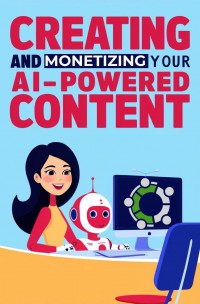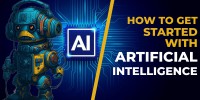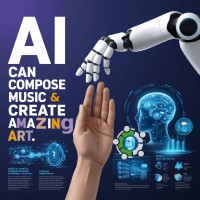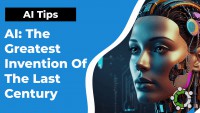MONETIZE & BOOST CONTENT
Monetizing your FREE webinars and related content has never been easier. Use our platform to list your events and onboard new affiliates as well as guests. Earn $1.00 for each new guest you onboard, share up to 70% of tipping and membership revenues and promote your webinar(s) to reach new global markets.
Drive earnings and expand reach to include listing of your webinar on upto 6,000 + event calendars, blogs and social media groups.
NINE MONETIZATION BENEFITS
- Earn $1 for each new collaborator/registration
- Share up to 70% of tipping revenues
- Share up to 12.5% of e-commerce revenues
- Share up to 50% of membership upgrades
- Share up to 30% of hosting upgrades
- Share up to 12.5% of your team's earnings
- Transform supporters into your affiliates
- Build viral fan networks
- Identify affiliates to promote your webinars
Save & Earn $10K Per Month
AI Will Streamline Businesses Allowing for More Job Satisfaction
Build CollaborateArtificial Intelligence (AI) has revolutionized how businesses operate, automating repetitive tasks and offering deeper insights into customer behavior. While AI often sparks concerns about job losses, it is also creating opportunities for increased job satisfaction and professional growth across industries.
As companies like Amazon restructure their management hierarchies, AI continues to drive significant changes in business operations. Here’s how AI is streamlining companies and enhancing job satisfaction for employees.
The Shift in Management Structures
The Decline of Middle Management
For decades, middle management has played a crucial role in corporate structures. However, many of these roles are becoming redundant. Amazon, for instance, plans to cut 14,000 middle management jobs by 2025. CEO Andy Jassy aims to enhance operational efficiency by reducing bureaucratic layers, thus streamlining decision-making and cutting costs.
Jassy emphasizes that eliminating excessive management layers “drives decision-making closer to the front lines where it most impacts customers.” This shift allows for quicker decisions and empowers employees at lower levels to take initiative.
An Industry-Wide Trend
Amazon is not alone in this transformation. Companies like UPS and pharmaceutical giant Bayer AG are also reducing management roles. According to Live Data Technologies, nearly 50% of layoffs in 2023 affected management or executive positions, highlighting a broader industry trend.
These changes are not just about cost-cutting; they reflect a rethinking of middle management’s role in an AI-driven world. Businesses are leveraging AI to handle tasks traditionally assigned to managers, such as performance tracking and workflow oversight.
Why Middle Management Is Declining
Middle management expanded in the 1950s and 1960s to bridge the gap between executives and employees. Managers collected data, monitored productivity, and ensured alignment with company goals. Today, AI can efficiently perform many of these functions, including:
-
Performance Monitoring: AI tracks productivity in real time, providing instant feedback and improvement suggestions.
-
Data Analysis: AI-driven software compiles reports and extracts actionable insights faster than human managers.
-
Task Automation: Routine administrative functions, such as scheduling and workflow management, are seamlessly handled by AI systems.
Naeem Zafar, a former CEO and professor at UC Berkeley, states that “the role of middle managers will not disappear entirely but will be drastically reduced.” In the new business landscape, managers will focus more on mentoring and guiding teams rather than overseeing daily operations.
AI’s Role in Enhancing Efficiency
Automating Repetitive Tasks
One of AI’s most significant advantages is automating tedious and time-consuming tasks. In industries such as finance, healthcare, and retail, AI manages data entry, appointment scheduling, and customer inquiries. By handling these low-value tasks, AI allows employees to focus on strategic and creative work, increasing job satisfaction.
Real-Time Insights and Decision-Making
Beyond automation, AI provides real-time insights that help employees make better-informed decisions. Whether it’s sales forecasting, customer behavior analysis, or resource management, AI tools empower employees with data-driven decision-making capabilities.
Steve Taplin, CEO of Sonatafy Technology, highlights that AI-driven transformation is not just about cost-cutting: “It’s about driving results and fostering a culture of accountability in a market where speed and innovation matter more than ever.”
By enabling employees to make independent, data-driven decisions, AI enhances efficiency and boosts workplace morale.
AI and Job Satisfaction
Empowering Frontline Workers
By reducing middle management and integrating AI tools, businesses are empowering frontline workers with greater responsibility and autonomy. Employees gain a stronger sense of ownership over their work, which is a key driver of job satisfaction.
Research from Betterworks shows that providing employees with AI-driven insights and decision-making tools leads to higher engagement and productivity. Rather than being constantly monitored, employees are trusted to act based on real-time data, creating a more fulfilling work environment.
New Professional Growth Opportunities
AI is also reshaping career development. Traditional hierarchies are breaking down, allowing employees to step into leadership roles based on initiative rather than tenure. Instead of waiting for a promotion, workers can leverage AI insights to contribute meaningfully to company success.
Moreover, businesses that invest in AI training and upskilling programs ensure their workforce remains adaptable. Employees who learn to work alongside AI tools future-proof their careers and gain valuable technological expertise.
Addressing Concerns About AI Integration
Managing Job Displacement Fears
Despite AI’s benefits, concerns about job displacement persist. A survey by Beautiful.AI found that 64% of managers worry that AI could replace human roles, particularly in management.
To successfully integrate AI, businesses must address these concerns through transparent communication and reskilling initiatives. Providing employees with clear information on how AI will enhance their roles—rather than eliminate them—helps maintain trust and morale.
Maintaining Human Connection in the Workplace
As companies increasingly rely on AI, they must also recognize the importance of human interaction. Jamie Aitken, Vice President of HR Transformation at Betterworks, cautions that reducing too many management roles could harm employee engagement.
Middle managers often serve as mentors and support systems—roles that AI cannot replicate. Businesses must strike a balance between AI-driven efficiency and maintaining a workplace culture that values human connections.
The Future of AI in Business
Balancing AI and Human Leadership
Successful AI integration requires a strategic balance between automation and human leadership. While AI can streamline operations, businesses still need leaders to provide mentorship, emotional intelligence, and workplace guidance.
Organizations that empower employees to work alongside AI, rather than compete with it, will create a more innovative and motivated workforce. Leadership will evolve from direct supervision to fostering employee growth and strategic thinking.
A Commitment to Continuous Learning
To stay competitive in an AI-driven world, businesses must foster a culture of continuous learning. Investing in workforce upskilling ensures employees can adapt to new technologies and thrive in evolving roles.
This learning mindset applies not only to frontline employees but also to leadership. Future managers will need skills in data analysis, AI-driven decision-making, and adapting to rapid technological advancements. Companies that prioritize education and training will be better positioned for long-term success.
AI as a Tool for Enhancement, Not Replacement
AI is fundamentally transforming business operations, streamlining workflows, and enhancing efficiency. While concerns about job displacement exist, AI is not meant to replace human workers—it is a tool that enhances their capabilities.
Companies like Amazon are at the forefront of this shift, reducing middle management to simplify decision-making and drive innovation. As businesses follow suit, employees will find themselves in roles that offer greater autonomy, career growth, and job satisfaction.
The future of work is about collaboration between AI and human talent. Organizations that embrace this partnership will experience increased productivity, improved employee engagement, and better business outcomes. By focusing on continuous learning and human-centric leadership, businesses can ensure AI-driven success while fostering a more satisfied and empowered workforce.
References:
-
Beautiful.AI Survey, 2023
-
Betterworks HR Transformation Report, 2024
-
Morgan Stanley Report on Amazon, Bloomberg, 2023
-
Steve Taplin, Sonatafy Technology Interview, 2024
The Hidden Flaws of Crypto: Why the Industry Is Failing to D..
Build Collaborate
13 Views 4 hours ago
Actionable Solutions to Protect the Caribbean from Trafficki..
Build Collaborate
24 Views 12 hours ago
Why Jamaica Produces So Many Musical Legends: The African Ro..
Dunn, Pierre, Barnett & Company Canada Ltd
1K Views 4 days ago
How To Make Money With Social Rewards Technology? #NFT #Adve..
Build Collaborate
785.5K Views 2 years ago
AI Can Compose Music & Create Amazing Art: Exploring the Cre..
Build Collaborate
473.4K Views 1 year ago
Innovating The Way You Network & Monetize Online With Social..
Build Collaborate
227.2K Views 1 year ago
Why AI is the Greatest Invention of the Last Century: Transf..
Build Collaborate
99.4K Views 1 year ago
How Can You Fund Your Crypto Or Blockchain Project: Explorin..
Build Collaborate
97.6K Views 1 year ago
MONETIZE & BOOST CONTENT
Monetizing your FREE webinars and related content has never been easier. Use our platform to list your events and onboard new affiliates as well as guests. Earn $1.00 for each new guest you onboard, share up to 70% of tipping and membership revenues and promote your webinar(s) to reach new global markets.
Drive earnings and expand reach to include listing of your webinar on upto 6,000 + event calendars, blogs and social media groups.
NINE MONETIZATION BENEFITS
- Earn $1 for each new collaborator/registration
- Share up to 70% of tipping revenues
- Share up to 12.5% of e-commerce revenues
- Share up to 50% of membership upgrades
- Share up to 30% of hosting upgrades
- Share up to 12.5% of your team's earnings
- Transform supporters into your affiliates
- Build viral fan networks
- Identify affiliates to promote your webinars
Activate Tipping, Donations & Social Rewards
Register Now
Support This Creator
Thank you [ Name of Creator ]
Email:
COPY TEXT BELOW, OPEN EMAIL CLIENT, CREATE NEW MESSAGE, PASTE TEXT FROM CLIPBOARD & SEND MESSAGE
I thought you might be interested in this content/opportunity:
You can review at
Whatsapp:
COPY TEXT BELOW, OPEN WHATSAPP, CREATE NEW MESSAGE, PASTE TEXT FROM CLIPBOARD & SEND MESSAGE
I thought you might be interested in this content/opportunity:
You can review at
Instagram:
COPY TEXT BELOW, OPEN INSTAGRAM& CREATE NEW DIRECT MESSAGE, PASTE TEXT FROM CLIPBOARD & SEND MESSAGE
I thought you might be interested in this content/opportunity:
You can review at
Skype:
COPY TEXT BELOW, OPEN SKYPE& CREATE NEW DIRECT MESSAGE, PASTE TEXT FROM CLIPBOARD & SEND MESSAGE
I thought you might be interested in this content/opportunity:
You can review at
Snapchat:
COPY TEXT BELOW, OPEN SNAPCHAT, CREATE NEW CHAT, PASTE TEXT FROM CLIPBOARD & SEND MESSAGE
I thought you might be interested in this content/opportunity:
You can review at



















